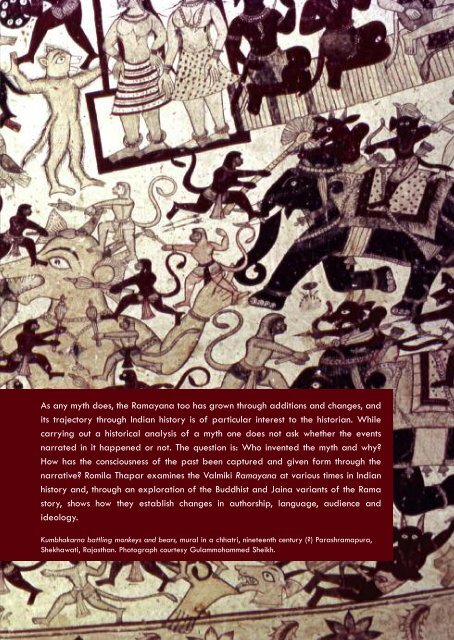Layout 3 - India Foundation for the Arts - IFA
Layout 3 - India Foundation for the Arts - IFA
Layout 3 - India Foundation for the Arts - IFA
Create successful ePaper yourself
Turn your PDF publications into a flip-book with our unique Google optimized e-Paper software.
As any myth does, <strong>the</strong> Ramayana too has grown through additions and changes, and<br />
its trajectory through <strong>India</strong>n history is of particular interest to <strong>the</strong> historian. While<br />
carrying out a historical analysis of a myth one does not ask whe<strong>the</strong>r <strong>the</strong> events<br />
narrated in it happened or not. The question is: Who invented <strong>the</strong> myth and why?<br />
How has <strong>the</strong> consciousness of <strong>the</strong> past been captured and given <strong>for</strong>m through <strong>the</strong><br />
narrative? Romila Thapar examines <strong>the</strong> Valmiki Ramayana at various times in <strong>India</strong>n<br />
history and, through an exploration of <strong>the</strong> Buddhist and Jaina variants of <strong>the</strong> Rama<br />
story, shows how <strong>the</strong>y establish changes in authorship, language, audience and<br />
ideology.<br />
Kumbhakarna battling monkeys and bears, mural in a chhatri, nineteenth century (?) Parashramapura,<br />
Shekhawati, Rajasthan. Photograph courtesy Gulammohammed Sheikh.


